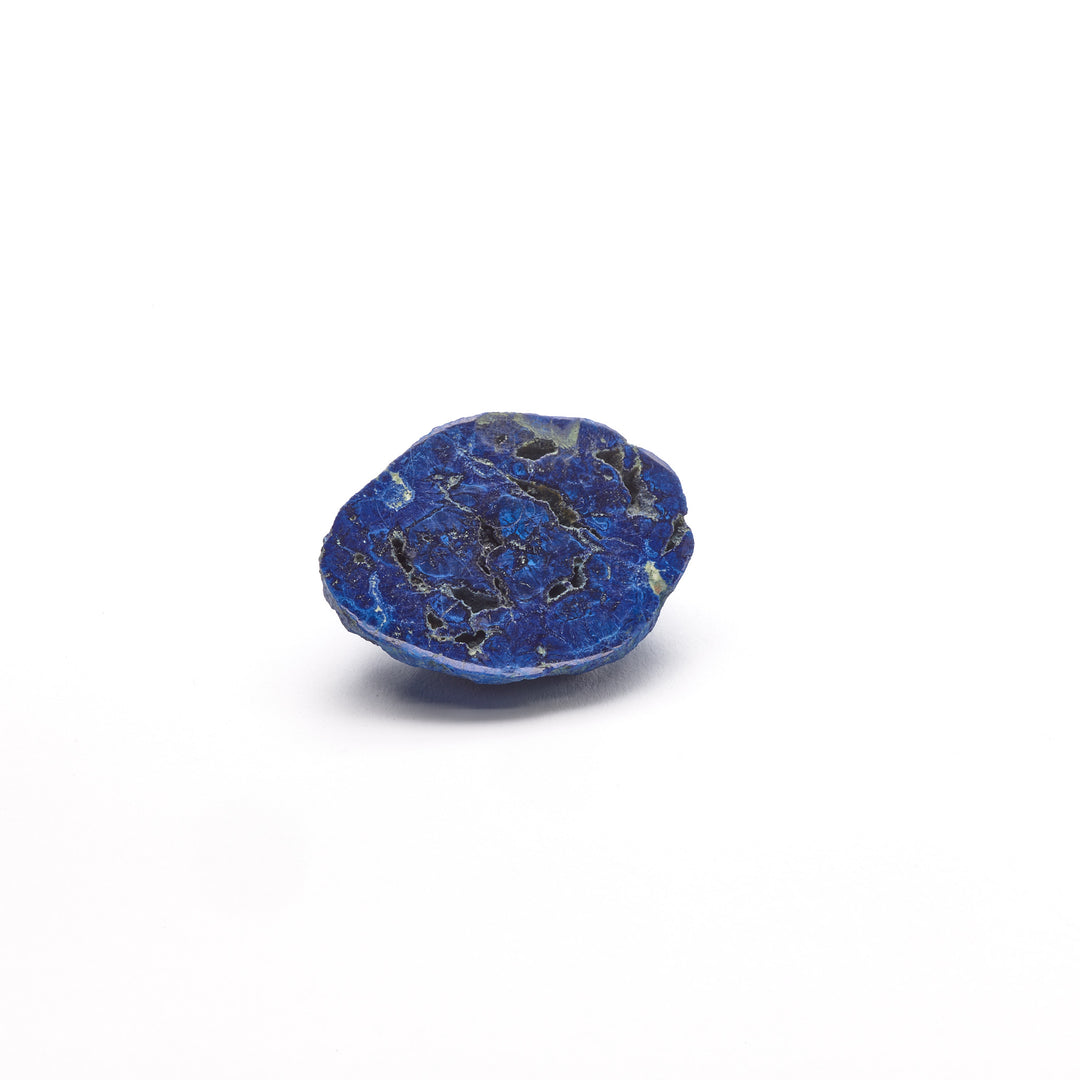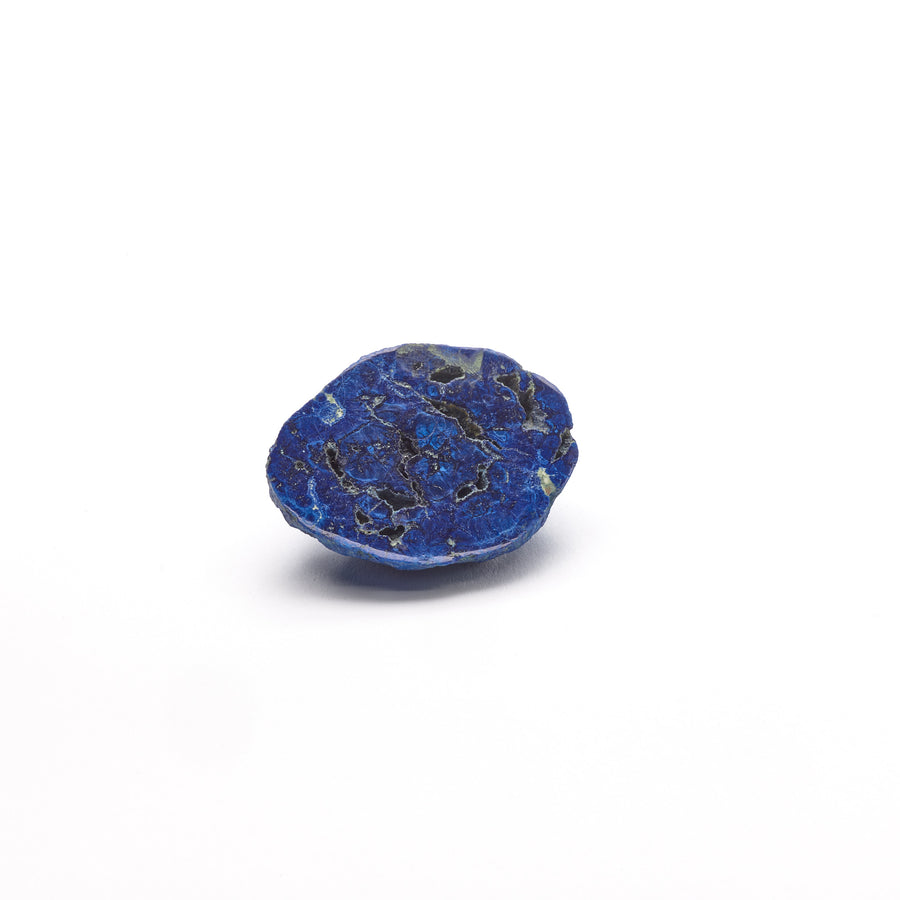
Azurite, Small
- Free returns
- Low stock - 6 items left
- In stock
Known throughout the ancient world, the blue color, known as "azure," is like the deep blue evening skies often seen above deserts and winter landscapes. The stone’s name “Azurite” comes from a borrowed Persian word, lazhward, for blue. The name then became lazurium, to azurium, to azure. Ancient people used Azurite as an ore of copper, as a pigment, as a gemstone, and as an ornamental stone. It is still used for all of these purposes today.
Used occasionally by the Egyptians as a pigment, Azurite wasn’t heavily used in paintings until the Middle Ages and Renaissance when the process to create the pigment Egyptian Blue was lost to time. It was found that multiple coats of Azurite pigment formed a beautiful crystalline crust with a deep blue hue and subtle sparkle. This created a rich blue effect with incredible depth. While it was used more often than the difficult to obtain Ultramarine pigment (derived from Lapis Lazuli), Azurite as a pigment was unstable and eventually faded to a green-ish blue shade, as seen in Michelangelo’s The Entombment and Raphael’s Madonna and Child Enthroned with Saints. Once Prussian Blue was invented in 1704, it displaced Azurite as the most commonly used blue pigment in European paintings, but still remained popular due to the beautiful effect it created.
Due to natural variations in the stone, the specimen you receive may look different from the one pictured
Specimens range between 1 inch and 1.5 inches
This Item is Eligible for Shipping
